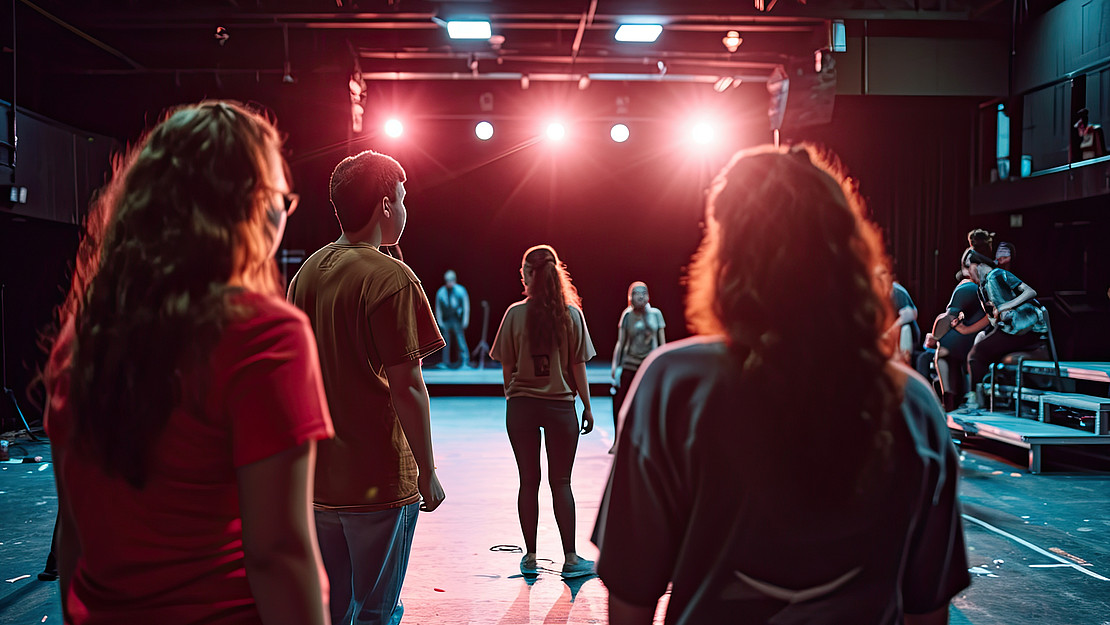Phenomenological vignette research in dance
Watchin' Dance
With the Watchin' Dance project, we want to use phenomenological vignette research to make a contribution to the development and discussion of methods in dance, sport and music education research. We see the method as an opportunity to constructively approach the chosen research subject of dance reception.
The vignettes written in the project capture particular moments of affectedness, concern or even resistance in dance reception. Of particular interest are the young people's physical and verbal reactions to the dance performance as well as interactions between the students.
The aim of the project is to gain differentiated insights into young people's experiences of receiving contemporary dance and to derive the corresponding educational potential of dance reception. The focus is on the following research questions:
- What modes of reception do young people exhibit when attending a contemporary dance theater?
- What appeals to or irritates young people (e.g. forms of movement, musical aspects, staging)?
- How can they engage with the (dance) theater event?
- What role does the music play?
- How do the young people respond to the dance?
- What are these (aesthetic) experiences and which dimensions of aesthetic experience can be concretized in the reception of dance?
Project description
For the project, we accompanied two groups of pupils to dance performances at the Staatstheater Kassel in the 2023/2024 season. The students were between 15 and 17 years old and attended various schools in Kassel. They have different practical and receptive previous experience with (contemporary) dance.
 Image: SaroStock@adobestock.com
Image: SaroStock@adobestock.comThe performance began with 15 young people watching the play "The Nutcracker | De Notenkraker" by the United Cowboys (Netherlands). The students were between 16 and 17 years old and were in Year 11 at a grammar school at the time of the theater visit.
With the young people in the second group, we went to the play "Winterwende | Winter Solstice; Baroque Visions for the End of Time" by Kristel van Issum (Netherlands) and Anat Oz (Israel). The students were between 15 and 16 years old and were in tenth grade at a comprehensive school in Kassel at the time of the theater visit.
Work description Staatstheater Kassel
The young people were accompanied by three to four vignette writers at each performance. The researchers recorded individual perceptions, impressions and special features of the young people, the stage action and the audience throughout the play. Above all, the "co-experienced experience or the intersubjective moments of perception and experience by which the vignette writers in the field (in the research situation) [were] affected" (Agostini et al. (Agostini et al. 2023, p. 41) were recorded. Following the play, the experiences were captured in rough vignettes (a first draft). In a subsequent intersubjective exchange, the raw vignettes were validated and condensed into vignettes.
The resulting vignettes are followed by vignette readings, which work out the central experiences in the vignettes, link them with theoretical references and point out the insights to be gained from them regarding reception experiences of contemporary dance.
